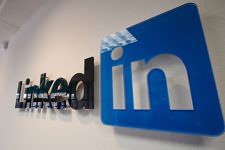Linking In & Synching Up to Stay Ahead
“How to maximize the usefulness and prospects of the network for professionals, LinkedIn.”
By Troy Redick, Staff Writer
With the recent buzz in business circles about the valuation of Twitter, now is as good a time as any to explore the value of the prominent social media sites. Being private companies, however, there is no way to explicitly valuate companies like Twitter, though this company has been estimated at 4.8-10 billion dollars. And though the dollar value of these media outlets is certainly high, such individual services and platforms offer value not only to investors, but also usage value to professionals, advertisers and the general public.
The network for professionals, LinkedIn, is among the most popular social media sites out there. It is widely used as a recruitment tool by Human Resource specialists, a prospecting avenue by various salespersons, and as a general networking system for professionals. Personally, I have recently spent a significant amount of time building my LinkedIn profile, applications and a network of connections to make use of all three of these major functions.
LinkedIn allows members to upload data onto the site that’s usually found on a resume, including work experience, relevant skills and education. Furthermore, it includes a recommendation function, allowing users to vouch for others they have worked with in some capacity, in effect serving as a built-in reference system. This set-up is convenient for recruiters, allowing them to search by keywords and quickly find qualified candidates, and providing them the option to contact candidates directly through LinkedIn with offers for interviews. Building a good LinkedIn profile can be quite rewarding in this regard: I myself have been sent employment offers by several prominent financial services firms for various positions.
One of the most important aspects of a good LinkedIn profile, if you are using it as part of a passive job search strategy, is to be very specific and descriptive when outlining your specialties. For example, when searching for a position as a financial planner, I make sure to highlight my experience managing a client contact system, using financial planning and analytical software, sales experience and people skills.
As I am in the process of launching my own financial planning practice this spring, I have also been tooling my LinkedIn profile with the hope of attracting a clientele. As I am only on the cusp of being licensed and my practice has not yet started, I cannot speak from first-hand experience. However, several advisors I know through work and school have made extensive use of LinkedIn as part of a co-ordinated online marketing approach and have seen good results in finding qualified prospects.
Having joined several LinkedIn groups and other online communities dedicated to online marketing for financial planners and other financial services providers, and spoken one-on-one with a few practitioners, I have started using LinkedIn as the hub of what will hopefully be a recognizable online presence with broad reach. By adding the Tweets feature to my LinkedIn profile, I have been able to synchronize my LinkedIn status with my separate Twitter account, as well as linked my central profile to a Slideshare (to post my educational and advertising power-point presentations online), a WordPress blog and a Youtube account. I plan to soon create a Facebook page for my business as well.
Aside from attracting job offers or prospective clients, LinkedIn provides networking connections to all sorts of business people and professionals. Like Facebook, LinkedIn has groups that members can join to have discussions with and make referrals to others in the same or related industries. And like Twitter, members can ‘follow’ companies on LinkedIn to see official posts and job opportunities at these firms.
Finally, members can connect with other members and make use of the internal mail feature to send private messages, make recommendations for their connections, and be introduced to other users that are mutually connected. In this way, through second and third degree connections, it is possible to quickly build a large network.
As a financial planner, useful connections include members of the big banks and insurance companies, wealth management firms, tax lawyers and accountants, mortgage brokers and real estate agents, and other professionals. In addition to being prospective clients, professionals such as these can add value to your business by providing mutual prospect referrals, and by offering their services to your clients and vice versa.
While I cannot speculate what ownership of LinkedIn would be worth, I do know that its use value to me and to other people in the finance or business world is immense. It not only has many features that I make use of, but it is easy to integrate as the center of a web of online platforms and build a presence for my business online. Even this may have a tangible worth eventually, measurable in revenues from clients generated by online marketing initiatives and from referrals of connections met through social media.
Whatever this may be worth in dollars, I am certain that an in-depth working knowledge of online (specifically social) media will be a large part of any up-and-coming business planning for aggressive growth. Hopefully in a few months I will be able to report a personal success story with some financial figures.
By Troy Redick, Staff Writer
The ARB Team
Arbitrage Magazine
Business News with BITE
Liked this post? Why not buy the ARB team a beer?
Just click an ad or donate below (thank you!)

























Share the post "Linking In & Synching Up to Stay Ahead"